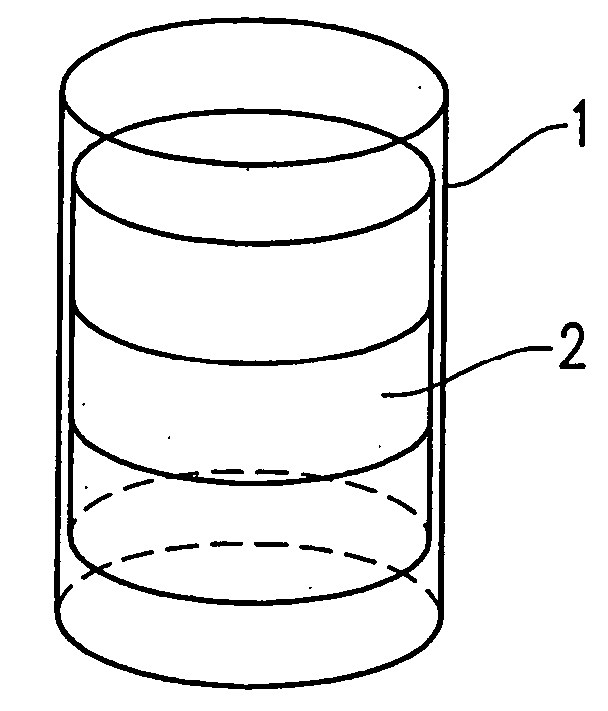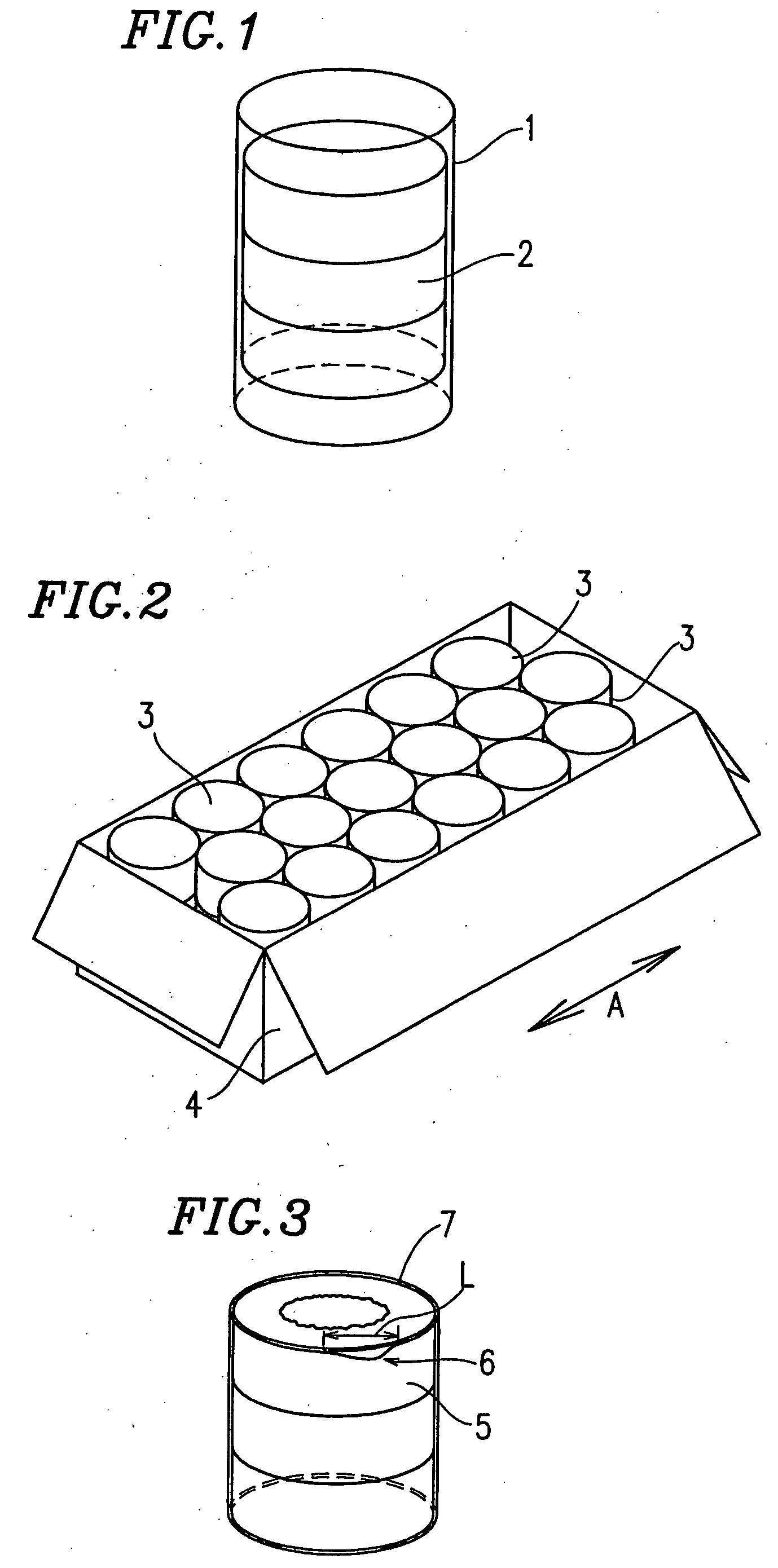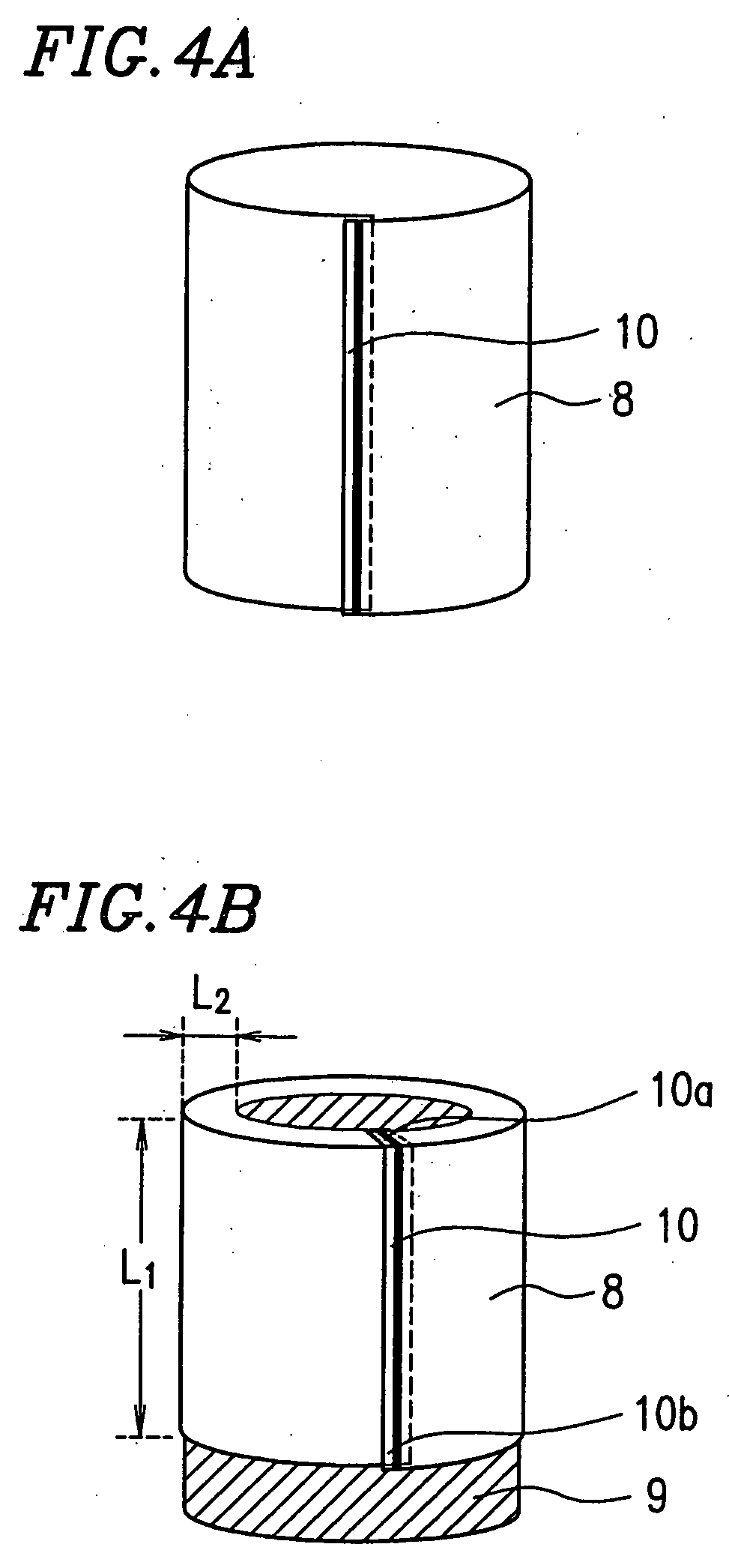Heat shrinkable polyester film
a polyester film, shrinkable technology, applied in envelope/bag making machinery, paper/cardboard containers, other domestic objects, etc., can solve the problems of difficult printing on polystyrene products, flaws are likely to occur, shrinkable polyester films have been attracting public attention, etc., to achieve good shock resistance, good finish, and sufficient solvent adhesiveness
- Summary
- Abstract
- Description
- Claims
- Application Information
AI Technical Summary
Benefits of technology
Problems solved by technology
Method used
Image
Examples
examples)
(EXAMPLES)
[0119] The present invention will now be described in greater detail by way of examples. However, the present invention is not limited to these examples, but other examples may be possible without departing from the scope of the present invention.
[0120] The evaluation methods used in the present invention will now be described with reference to Table 1 and Table 2 below.
(1) Heat Shrinkage
[0121] A sheet of film was cut into 10 cm'10 cm pieces, and subjected to a no-load treatment in hot water at a temperature ±0.5° C. of a predetermined temperature so as to heat-shrink the film. Then, the longitudinal and transverse dimensions of the film were measured so as to obtain the heat shrinkage of the film according to the following expression (Expression 1). The direction along which the heat shrinkage was greater was assumed to be the main shrinkage direction of the film.
Heat shrinkage={(length before shrinkage−length after shrinkage) / length before shrinkage)×100 (%) (Expre...
example 1
(Example 1)
[0149] A polyester obtained by mixing together 37 wt % of Polyester A, 53 wt % of Polyester Band 10 wt % of Polyester C, as shown in Table 1, was melted and extruded through a T die at a temperature of 280° C., and rapidly cooled down by using a chill roll to obtain an undrawn film. The undrawn film was drawn in the longitudinal direction by a drawing factor of 1.1 by using a multi-stage roll type vertical drawer (roll temperature: 80° C.), and then drawn with a tenter in the transverse direction at the film temperature of 73° C. by a drawing factor of 3.9. The film was then subjected to a heat treatment at 82° C. for 10 sec to obtain a heat shrinkable polyester film having a thickness of 45 μm.
example 5
(Example 5)
[0152] A polyester composition obtained by mixing together 36 wt % of Polyester A, 49 wt % of Polyester B and 15 wt % of Polyester E, as shown in Table 2, was melted and extruded through a T die at a temperature of 280° C., and rapidly cooled down by using a chill roll to obtain an undrawn film.
[0153] The undrawn film was pre-heated until the film temperature reached 80° C., after which the film was drawn with a tenter at a temperature of 65° C. in the transverse direction by a drawing factor of 4.0 to obtain a heat shrinkable polyester film having a thickness of 50 μm.
PUM
| Property | Measurement | Unit |
|---|---|---|
| height | aaaaa | aaaaa |
| diameter | aaaaa | aaaaa |
| total weight | aaaaa | aaaaa |
Abstract
Description
Claims
Application Information
 Login to View More
Login to View More - R&D
- Intellectual Property
- Life Sciences
- Materials
- Tech Scout
- Unparalleled Data Quality
- Higher Quality Content
- 60% Fewer Hallucinations
Browse by: Latest US Patents, China's latest patents, Technical Efficacy Thesaurus, Application Domain, Technology Topic, Popular Technical Reports.
© 2025 PatSnap. All rights reserved.Legal|Privacy policy|Modern Slavery Act Transparency Statement|Sitemap|About US| Contact US: help@patsnap.com



